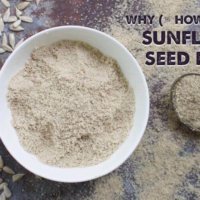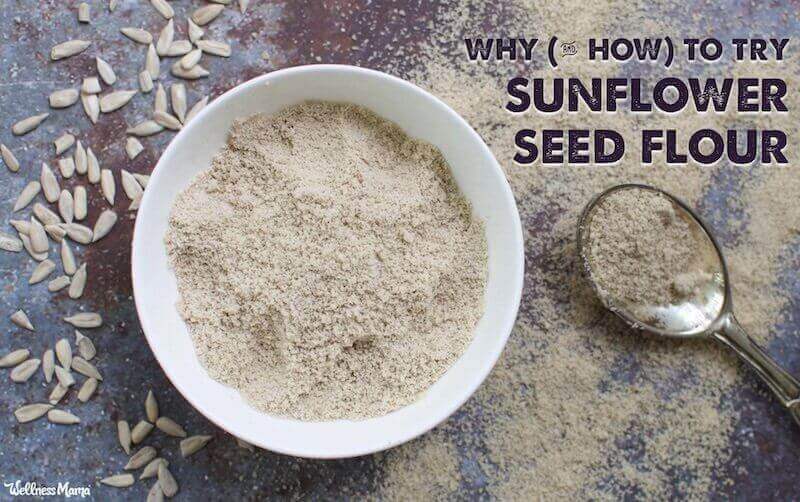While you can certainly find an array of delicious grain-free alternatives to regular flour, it can be difficult to make the transition to grain-free baking. Not to mention that nut-based baked goods are often a problem with an increasing number of kids with nut allergies. Sunflower seed flour is a nut-free way to make healthier baked goods that still taste great!
The best part is that it is so easy and inexpensive to make right at home. Trust me — it will only take a few minutes to blend it up yourself!
Sunflower Seed Flour in One Step
This recipe is so simple I can hardly call it one! Sunflower seed flour is made by grinding up raw sunflower seeds until the texture is fine, like regular flour. This creates a grain-free flour alternative that is low carb and contains no nuts. I use it in rotation with almond flour or other alternative baking flours.
So how does it taste? Sunflower seeds have a slightly nutty but overall neutral flavor. That makes sunflower seed flour incredibly versatile as the mild flavor works well with almost every recipe. Plus, sunflower seed flour adds just a touch of natural sweetness, which you may be able to use less sweetener.
As far as nutrition goes, these little seeds are excellent sources of B vitamins, antioxidants, and vitamin E. Plus, they contain antioxidants like phenolic acids and flavonoids, which can protect brain health while helping you maintain a healthy weight.
And the best news of all: this flour tends to be much less expensive than some of its grain and gluten-free competitors!
How to Make Sunflower Seed Flour
Making your own sunflower seed flour is so incredibly easy. With less than a minute in a food processor, you’ll watch raw sunflower seeds transform into a light and fluffy flour alternative.
Tips for the Right Consistency
About 30 seconds of pulsing in the food processor should get you a nice fine powder. If you pulse too long, that powder is going to take hold of the oil present in the sunflower seeds and quickly turn into sunflower seed butter. While delicious, sunflower seed butter isn’t going to do you any favors in replacing flour in your recipes.
To avoid the line between sunflower seed flour and sunflower seed butter, a few rounds of sifting goes a long way. It’s best to err on the side of caution here. As soon as you see a majority of the sunflower seeds ground to a powdery consistency, sift the mixture into a bowl. You’ll have a good amount of coarser bits leftover after sifting. Pop those back in your food processor and repeat until all the seeds have transformed into a fine flour.
If you overdo it, don’t throw it out. Make some No-Nut Nutella!
Using Sunflower Seed Flour in Recipes
No need to flex your math skills here. Most recipes can be swapped on a 1-to-1 ratio. That means if a recipe calls for one cup of all-purpose or almond flour, you can use the same amount of sunflower seed flour. See this post for a full list of substitute flours. (Remember that coconut flour absorbs liquid at a very different rate than other flours, so if you have a recipe that calls for coconut flour, you might have to make some calculations. A good rule of thumb is to add a full cup of sunflower seed flour for every ¼ cup of coconut flour.)
Important note: The seeds of a sunflower contain chlorophyll, which reacts with baking powder and baking soda to cause something called “chlorogenic quinone-amino acid greening.” Don’t worry, that’s just a fancy way of saying you may find green specks in your sunflower seed flour baked goods. They are completely safe and won’t affect the flavor of the final product. If you still feel a bit squeamish about eating anything green-flecked, you can counter this reaction by adding a bit of lemon juice or vinegar to the recipe.

Sunflower Seed Flour Recipe
Servings
Equipment
Ingredients
- ½ cup sunflower seeds
Instructions
- In a blender, pulse sunflower seeds for about 30 seconds, until finely ground.
- Optional: Sift for a finer flour.
Nutrition
Notes
Have you ever baked with sunflower seed flour? How did it turn out? Please share tips!




Leave a Reply